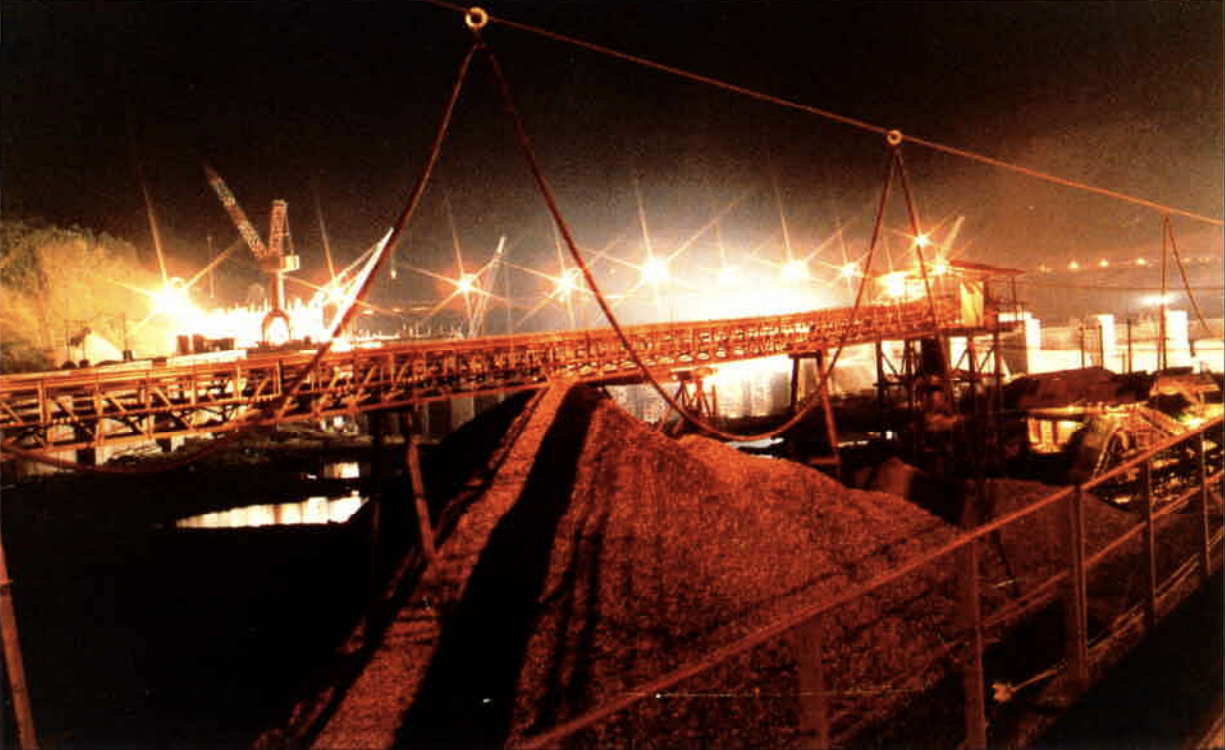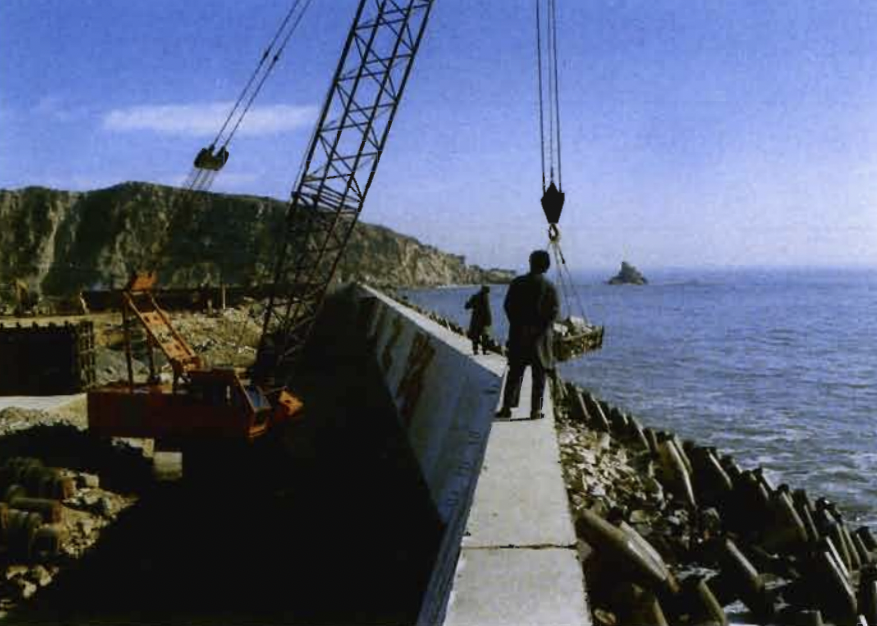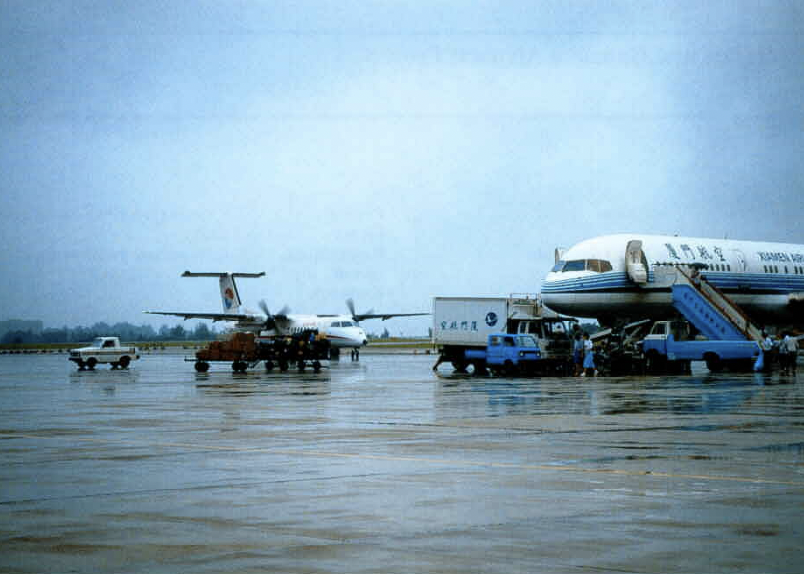The Kuwait Fund for Arab Economic Development in China: Sovereign Wealth and International Aid.
Chasiko Hydro-electric Project (China)
In January 2022, the foreign ministers of Saudi Arabia, Kuwait, Oman and Bahrain arrived in China for a five-day visit with their Chinese counterpart Wang Yi. This collective visit, which also seemingly solidified what policy analysts have been referring to as ‘the Gulf’s eastward turn,’ signaled a potential loosening of American hegemony in the region. The turn eastwards is commonly taken to signify a fundamental reorientation, one that not only indicates a changing political mood, but which also registers a shift in the political economy of globalised capitalism[i]. The purpose of the trip was, broadly, to deepen diplomatic and economic ties, most specifically, a push for the implementation of a free-trade agreement between China and the GCC states.
Much of the emergent literature on the GCC-China relationship focuses on a potential synergy in political economic structures, and frames the analysis in terms of geopolitical and energy-based interests.[ii]
While the reasons for this are perhaps obvious, I want to take a different tack in thinking through these linkages. There is certainly a marked intensification of GCC-China political economic connections, especially since the announcement of the Belt and Road Initiative (BRI), but there is also an understudied history here. To begin, I want to focus on the question of development aid, an understudied and under-theorised link between two moments of state-driven capitalist development. For my case, I want to turn specifically to the activities of the Kuwait Fund for Arab Economic Development (KFAED).
Much like the current literature on the GCC’s shift to China, the reasoning for the establishment of the KFAED, and indeed, of much of the international aid bodies in GCC countries, is seen as foremost political in nature, with the main goal being that of ensuring national security for states that were more reliant on diplomatic means of national defence as opposed to militaristic ones.
Jinzhou Harbor Project (China)
As Shireen Hunter puts it quite directly: “The aid policies of the Arab members of OPEC have been motivated first and foremost by their security, politico-ideological and economic objectives, both at the level of individual Arab countries and at a pan-Arab level.”[iii]
In the specific case of Kuwait, these concerns are thought to have been historically exacerbated by the threat of invasion, most significantly, during the sabre-rattling between Iraqi Prime Minister Abd al-Karim Qassim and the British shortly following Kuwait’s independence in June 1961.
The KFAED was established a few months later, in December 1961. The Fund’s initial remit was to provide development loans, primarily in the agricultural, infrastructural, and education sectors to Arab countries, but in 1974, following the second oil windfall that came with the oil price spike of the early 1970s, its remit was expanded to include all developing countries.
To get a better picture of this expansion, we can see that in 1970 the Fund made 26 loans to 11 countries, to the amount of $271 million. In 1973, the Fund made 41 loans to 11 countries, to the amount of $441 million. However, by 1975, the Fund had massively upscaled, giving out 80 loans to 25 countries to the amount of $1,024 million.[iv]
Details |
Total Loan Amount in Kuwait Dinar (millions) |
|
1982 – 1985 |
Hunan wood based panel plant project (10) Ninggou Cement Project (14.3) Urumqui Fertilizer Plant Project (13.3) Xiamen International Airport (6) Shaqikou Hydroelectric Project (9) Tianjin Vehicle Manufacturing (4) |
56.6 |
1986 – 1989 |
Beijing Silk Fabric (2) Qi Lu ceramic tiles plant (2) Luoyang Poly-propylene plant (6.2) Jinzhou Harbor (Phase 1) (5) Jinan Yao-Qiang Airport (3) Beitai Ductile Cast Iron Pipe Project (6) |
24.2 |
1990 – 1992 |
Shenzen Airport (8) Chengdu Factory for Aluminum Foil (8.7) Kaifeng Graphite Electrode Project (9) Xiamen Airport Improvement Project (5.3) |
31 |
1993 – 1995 |
Jingdzhen and Ganzhou Airports Project (3.5) Xian-Baoji Highway (9.1) Zhengzhou - Xuedian Airport (7) |
19.6 |
1996 – 1999 |
Ningxia Integrated Rural Development (First stage, first loan) (10) Ningxia Integrated Rural Development (First stage, second loan) (10) Xiamen Airport supplementary loan (1.5) |
21.5 |
2000 – 2003 |
Qinzhou Port Project (Phase II) (6) Huizhou Port Project (4.25) Panzihua Airport Project (9.5) Yulin-Jingbian Expressway Project (10.8) Qinzhou Port-Xiniujiao Highway Project (9.3) Qinzhou Port-Xiniujiao Highway Project (10.8) |
50.65 |
2004 – 2007 |
Yibin-Changning Road Project (8.275) Ningxia People’s Hospital (10) Shuzhou Environment Project (10) |
28.275 |
2008 – 2011 |
Lake Bosten River Basin Environment Protection and development (6.8) Qinghai Vocational Education Development Project (11.5) Guizhou Education College Development Project (7.4) |
25.7 |
2012 – 2015 |
Wuzhou Vocational Education Center Project (10) Project Expansion College Medical Luohe (9) |
19 |
2016 – 2019 |
Wuzhong People’s Hospital Project (Second Phase) (9) Financing of the Guiyang Second People’s Hospital Expansion (9) |
18 |
2020 |
Construction and Equipping Buildings in the Zhengzhou Railway Vocational and Technical College Project (10.3) |
10.3 |
Total |
304.825 |
The structure of the Fund is interesting to note, as it was modeled almost directly on the World Bank, and in its foundational moment utilised the expertise of World Bank employees directly in setting up its remit and funding orientation.[v] The Fund was thus uniquely positioned as an established player within international development aid bodies when China began its liberalisation meetings with the World Bank in the early 1980s. Its constructed image as a lender with neutralist political orientation, Third-Worldist credentials, and low interest rates could only have made it more attractive. This was especially the case for a Chinese reform program that was distinctly aiming for market reform while avoiding the ‘shock doctrine’ tactics associated with the Washington consensus[vi].
Since then, the KFAED has supplied approximately $900 million in loans to China. With 40 loans, China is thus the second highest recipient of Kuwait Fund loans following Egypt at 54. Below is a table of the projects that the Kuwait Fund has financed in China, arranged chronologically.
The Fund thus provides an interesting South-South vision of what international development aid looks like, one that takes its cues from the World Bank yet is conducted through the cultivated image of neutrality and insistence on independence which is Kuwait’s main mode of international statecraft.
Xiamen Airport (China)
As a key example, Kuwait was the first Gulf country to diplomatically recognize the People’s Republic of China in 1971 after nearly a decade of diplomatic and economic exchange. In his address regarding the recognition, Minister of State Abdulaziz al-Husain stated that:
official recognition of the PRC and the exchange of ambassadors is only an added element to the ‘reality’ of the existing relationship between the two states. For our trade relations are immense, and we have always voted for the PRC’s rightful place at the UN. Moreover, His Highness the Crown Prince had visited China many years ago at the invitation of the Chinese government.[vii]
On the Chinese side, the People’s Daily noted the recognition by emphasizing “the fundamental interests and common aspirations of the people of the two countries who were oppressed, trampled underfoot and looted by imperialism in the past and face the same task of opposing imperialism today.”[viii]
Thus, the positioning of both countries within the international direct their framing, and lay the grounds for the advancement of their co-operation.[ix]
Moreover, as demonstrated by the investments above, which amount to, by total and by quantity the highest that the Kuwait Fund has lent to a non-Arab country, Kuwait has been relatively active in China prior to the current ‘turn eastward.’
Beyond this, and despite the seemingly obvious ‘political’ explanations for the Kuwait Fund’s activities - which journalist David Holden went as far as to call ‘protection money’[x] - we can also see how the Fund’s activities in China are directly contingent on the transformations within the global political economy, transformations that run much deeper than those explained by geopolitics alone.
Instead, the activities of the KFAED in China appear to be determined by a conjunction of factors including China’s turn to foreign direct investment to finance its market-based liberalization and the second oil windfalls which accrued to the Arab Gulf states following the nationalisation of their oil industries combined with the oil crisis of 1973-74.
The trajectory of foreign aid provided by the KFAED to China can therefore serve as an interesting barometer of China’s liberalisation and market creation. As economic historian Ho Fung Hung puts it:
China’s capitalist boom originated from both the educated, healthy rural surplus labor in China as a legacy of the Mao period and the export-oriented, labor-intensive manufacturing in the East Asian Tigers. Though the state sector in China, another legacy of the Mao period, is huge, and fixed-asset investment within that sector constitutes a large part of China’s economic dynamism, such debt-financed investment is very much grounded in the increasingly large liquidity and foreign-exchange reserve engendered by the export sector… The China boom is therefore heavily reliant on the free transnational flow of investment and goods. It would have been impossible without the rise of global free trade since the 1980s.[xi]
Kuwait’s role in this should obviously not be overstated. However, considering the common image, academic and popular, of the GCC as the ‘oil spigot of the world’, it is important to demonstrate that the region’s role in the global economy is more complex.
Moreover, it is important to reiterate that what we see happening in terms of a ‘realignment’ does have a history, one that is integral to the statecraft and political economy of the GCC and of China.
To take a key example, a recent interview conducted with the Chinese ambassador[xii] to Kuwait roots his narrative about the history of diplomatic ties between Kuwait and China directly to the Fund’s activities. What is perhaps more interesting is that the similar regional bodies to the Fund, such as those in Abu Dhabi and Saudi Arabia, do not have anything remotely resembling the Kuwait Fund’s activities in China. Does this particular institutional history colour contemporary relations? And if so, how so?
Over the course of this project, I hope to look at the GCC sovereign wealth fund activities in China, one of the most marked features of contemporary economic phenomenon between China and the GCC.
The link between development aid and foreign direct investment could provide an interesting and useful lens through which to view these developments. This is due to the fact that both activities collapse the political into the economic in a way which makes their separation difficult to undertake.
On the one hand, the sovereign wealth funds and the development aid bodies are distinctly sovereign institutions, and bring with them the freedom that this entails as investors and as lenders.
On the other, the horizon of their activities is limited by transformations within global political economy that do not exclusively reflect the interests of policy-makers within the states and institution as sovereign bodies. Instead, their activities are mediated by the fact that the economic and political behaviour of nation-states, and of the institutions which rely on the nation-states’ sovereignty, have “become dependent on, or at least vulnerable to, the functioning of foreign markets and the behavior of foreign countries and firms.”[xiii]
[i] Fulton, J. (2022, January 27). China is trying to create a wedge between the US and Gulf allies. Washington should take note. Atlantic Council. Retrieved June 1, 2022, from https://www.atlanticcouncil.org/blogs/menasource/china-is-trying-to-create-a-wedge-between-the-us-and-gulf-allies-washington-should-take-note/
[ii] Al-Sulayman, F. (2022). (rep.). Rethinking State Capitalism in the Gulf States: Insights from the China-focused Literature.
[iii] Hunter, S. (2021). Opec and the Third World: The Politics of Aid. Routledge. 58.
[iv] Kuwait Fund. (n.d.). Retrieved June 6, 2022, from https://www.kuwait-fund.org/en/web/kfund
[v] ‘Since it started its operations, the Kuwait Fund has had very close contacts with the World Bank. For the first few crucial years of its operations, it depended on World Bank experts to help in designing its operational methods. This was achieved by having one or two resident Bank experts as consultants. The loan agreements with the borrowers are still modelled after World Bank agreements. It is evident that the cautious policy of the Fund in lending has been at least encouraged (if not designed) through the influence of the World Bank.’ Demir, S. (1976). The Kuwait Fund and the Political Economy of Arab Regional Development. Praeger. 47.
[vi] Weber, I. (2021). How China escaped shock therapy: The Market Reform Debate. Routledge.
[vii] H., B. H. S. (2020). China's foreign policy in the Arab World, 1955-75: Three case studies. Routledge. 214.
[viii] ibid.
[ix] It is also interesting to note, despite being beyond the scope of my investigation here, the added layer of Islamic-based cooperation that was mobilized here. For example, Behbehani emphasizes that the Chinese delegation sent to Kuwait in in 1966 was primarily Chinese Muslim and headed by Hadj Muhamad Ali Shang Chi. ibid 204.
[x] cited in Hunter 2021.
[xi] Hung, H.-fung. (2017). The China Boom: Why China will not rule the world. Columbia University Press. 83.
[xii] Al-Ghusain, Y. (n.d.). Vice-President of mission at the Chinese Embassy, Liu Xiang: Kuwait Investment Authority investments in China more than $10 billion . Reconnaissance Research. Retrieved May 29, 2022, from https://www.reconnresearch.com/articles-single.php?ad=31
[xiii] Clark, G. L., Dixon, A. D., & B., M. A. H. (2013). Sovereign wealth funds: Legitimacy, governance, and Global Power. Princeton University Press. 45.



